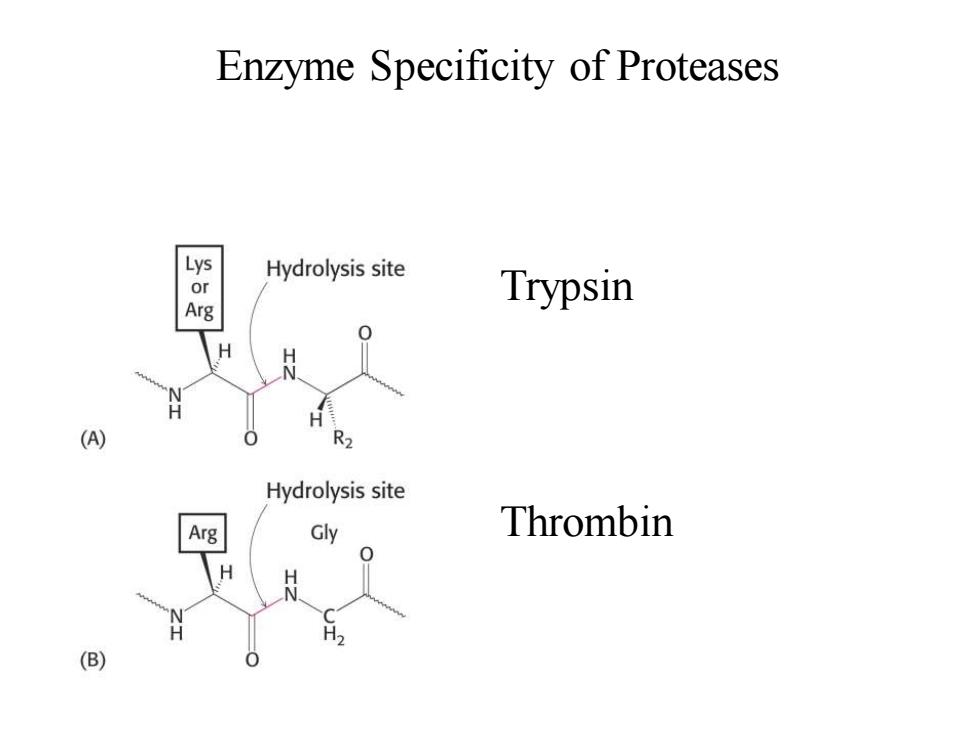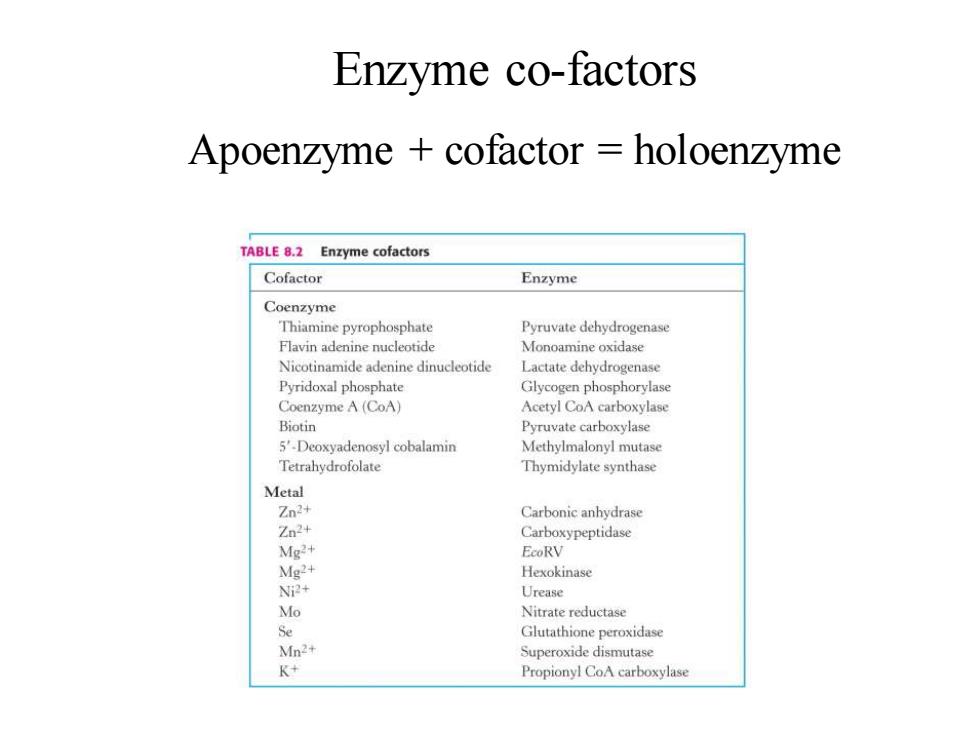
Enzyme Specificity of Proteases Or Hydrolysis site Trypsin Arg H (A) Hydrolysis site Arg Gly Thrombin H (B)
Enzyme Specificity of Proteases Trypsin Thrombin

Regulation Regulation of enzyme activity is achieved in a variety of ways,ranging from controls over the amount of enzyme protein produced by the cell to more rapid,reversible interactions of the enzyme with metabolic inhibitors and activators. Next chapter is devoted to discussions of enzyme regulation.Because most enzymes are proteins, we can anticipate that the functional attributes of enzymes are due to the remarkable versatility found in protein structures
Regulation Regulation of enzyme activity is achieved in a variety of ways, ranging from controls over the amount of enzyme protein produced by the cell to more rapid, reversible interactions of the enzyme with metabolic inhibitors and activators. Next chapter is devoted to discussions of enzyme regulation. Because most enzymes are proteins, we can anticipate that the functional attributes of enzymes are due to the remarkable versatility found in protein structures

Enzyme Classification NMP kinase:ATP NMP ADP NDP E.C.2.7.4.4 TABLE 8.3 Six major classes of enzymes Class Type of reaction Example Chapter 1.Oxidoreductases Oxidation-reduction Lactate dehydrogenase 16 2.Transferases Group transfer Nucleoside monophosphate kinase(NMP kinase) 3.Hydrolases Hydrolysis reactions(transfer of Chymotrypsin functional groups to water) 4.Lyases Addition or removal of groups to form Fumarase 18 double bonds 5.Isomerases Isomerization(intramolecular group Triose phosphate isomerase 16 transfer) 6.Ligases Ligation of two substrates at the expense Aminoacyl-tRNA synthetase 29 of ATP hydrolysis
Enzyme Classification NMP kinase: ATP + NMP ADP + NDP E.C. 2.7.4.4

Enzyme co-factors Apoenzyme cofactor holoenzyme TABLE 8.2 Enzyme cofactors Cofactor Enzyme Coenzyme Thiamine pyrophosphate Pyruvate dehydrogenase Flavin adenine nucleotide Monoamine oxidase Nicotinamide adenine dinucleotide Lactate dehydrogenase Pyridoxal phosphate Glycogen phosphorylase Coenzyme A(CoA) Acetyl CoA carboxylase Biotin Pyruvate carboxylase 5'-Deoxyadenosyl cobalamin Methylmalonyl mutase Tetrahydrofolate Thymidylate synthase Metal Zn2+ Carbonic anhydrase Zn2+ Carboxypeptidase Mg2+ EcoRV Mg2+ Hexokinase Ni2+ Urease o Nitrate reductase Glutathione peroxidase Mn2+ Superoxide dismutase K+ Propionyl CoA carboxylase
Enzyme co-factors Apoenzyme + cofactor = holoenzyme

Cofactor (Coenzyme and Prosthetic Group) In most cases,a coenzyme is firmly associated with its enzyme,perhaps even by covalent bonds, and it is difficult to separate the two.Such tightly bound coenzymes are referred to as prosthetic groups of the enzyme.The catalytically active complex of protein and prosthetic group is called the holoenzyme.The protein without the prosthetic group is called the apoenzyme;it is catalytically inactive
Cofactor (Coenzyme and Prosthetic Group) In most cases, a coenzyme is firmly associated with its enzyme, perhaps even by covalent bonds, and it is difficult to separate the two. Such tightly bound coenzymes are referred to as prosthetic groups of the enzyme. The catalytically active complex of protein and prosthetic group is called the holoenzyme. The protein without the prosthetic group is called the apoenzyme; it is catalytically inactive